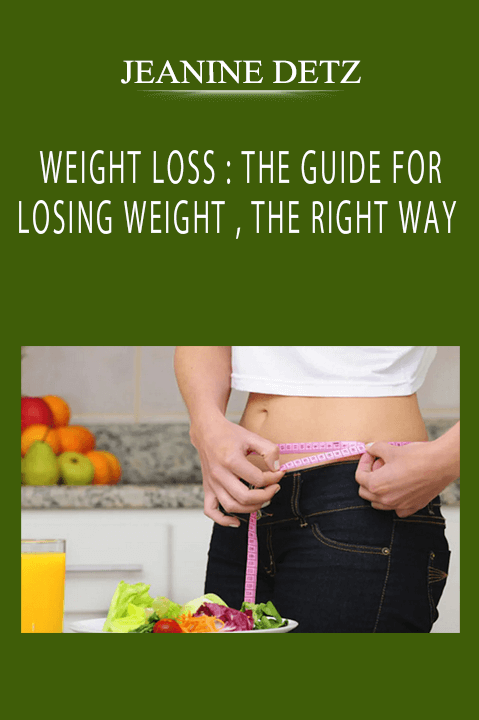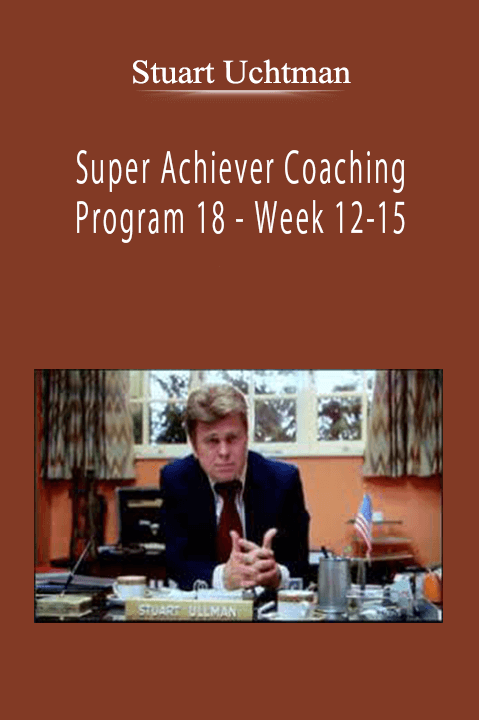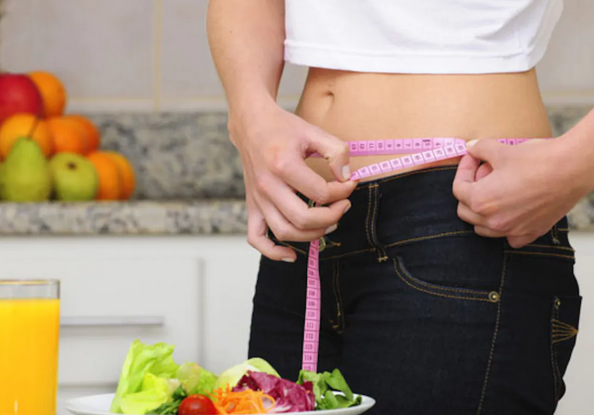JEANINE DETZ – WEIGHT LOSS : THE GUIDE FOR LOSING WEIGHT , THE RIGHT WAY
Many people call a truce with the battle of the bulge at a certain age, and that’s not necessarily a bad thing. When you’re older than 60, being a little overweight may actually be beneficial because being underweight increases one’s risk of malnutrition, osteoporosis, and falls. But you don’t want to be carrying too much excess weight.
If you’re very overweight or obese, you’re more likely to develop chronic diseases earlier in life,” says Steven Heymsfield, M.D., a researcher at the Pennington Biomedical Research Center at Louisiana State University in Baton Rouge. And obesity makes it more difficult for older people to engage in healthy daily activities.
Weight gain is a common “side effect” of aging. “Your metabolism gradually slows down,” Heymsfield says. Sarcopenia, a decrease in muscle tissue that occurs with age, is a likely cause—but not the only one.
“People generally become less active as they get older, even more so if they have orthopedic or other painful health issues,” Heymsfield says. “When you’re not burning as many calories but still eating the same amount, you gradually gain weight.”
Prescription medications may also play a role. Psychotropic drugs—particularly certain classes of antidepressants and antipsychotics—and corticosteroids (often prescribed for inflammatory diseases) can lead to substantial weight gain.
Small Changes, Big Benefits
You probably don’t have to lose as much weight as you think to improve your health. Simply maintaining a healthy weight—or dropping just a few pounds if necessary—can be worthwhile.
“Losing just 5 to 8 percent of your weight [about 11 to 17 pounds for a 220-pound person] improves your health and how well you function,” Heymsfield says. The effect can be considerable. A study published in the New England Journal of Medicine found that people who lost just 7 percent of their weight had a 58 percent lower risk of developing type 2 diabetes.
Getting Started
It’s important to know how to lose weight the right way from the very start. First tip: You can’t just cut calories. “Unless it’s coupled with an exercise program, weight loss will result in muscle loss,” Heymsfield explains. That’s why the best strategy combines calorie-burning, muscle-building exercise along with diet changes. In a study in the journal Obesity, half the people who took a similar approach kept off at least 5 percent of the weight they lost for eight years.
“Changing a diet has to be something you can stick with long-term because if you return to the way you were eating before, you’ll likely gain back the weight,” says Denise K. Houston, R.D., Ph.D., an assistant professor of gerontology and geriatric medicine at the Wake Forest School of Medicine in Winston-Salem, N.C.
To eat more healthfully, consult our healthy meals for weight loss plan or follow the MyPlate for Older Adults guidelines from Tufts University: Half of every meal should be fruits and vegetables; one-quarter should be grains, such as brown rice, oatmeal, and whole-wheat bread; and one-quarter should be protein (some of it dairy). Use oils and other fats, such as butter, sparingly.
Next, try to eat fewer calories. Simple changes help—like cutting out sugary drinks, switching from whole to 1 percent or nonfat dairy products, and making half of every meal fruit or vegetables. The National Institutes of Health Body Weight Planner allows you to personalize the number of calories you need to eat to reach your goal weight.
But keep in mind, Houston says, that women need to take in at least 1,200 calories per day; men, at least 1,300. “When you don’t eat enough calories,” she says, “it’s tough to get all the nutrients your body needs.”
Meet Goals for Nutrients
One must-have to keep in your diet: protein. “As you age, your body needs more protein to stimulate muscle protein synthesis,” Houston says. Shoot for 0.6 to 0.7 grams of protein per pound of body weight daily. To hit the target, eat beans, dairy, eggs, fish, lean meat, or poultry at each meal. (A recent study in the American Journal of Clinical Nutrition found that protein from any source—including plants—improves muscle health.)
Vitamin B12, vitamin D, and calcium are also important. Vitamin B12 helps maintain red-blood and nerve cells, and assists in the production of neurotransmitters (chemicals that relay signals between your brain and other parts of your body). It becomes more difficult for the body to absorb B12 with age. For vitamin B12, fortified cereals, seafood, and meat are good sources.
“Vitamin D and calcium are crucial for building and preserving bones, and they may be key for muscle health, too,” Houston says. Egg yolks contain small amounts of vitamin D, and fatty fish like mackerel, salmon, and tuna are among the best sources. Dairy products are rich in calcium; it’s also found in leafy green vegetables such as bok choy and kale.
The Exercise Connection
Aerobic activity, such as walking or cycling, is tops for calorie burning. For example, walking for half an hour torches about 140 calories, depending on your weight.
Strength training, however, may actually be more crucial for keeping off weight as you age. “After midlife, you lose 5 to 10 pounds of muscle per decade, which dramatically reduces how many calories your body burns,” says Wayne L. Westcott, Ph.D., a professor of exercise science at Quincy College in Quincy, Mass. “Resistance training helps offset that loss, and research shows that your resting metabolic rate stays elevated 5 to 9 percent for up to 72 hours after a session.” That means if you work out with weights on only two days out of seven, you’ll reap the rewards of an elevated metabolism all week long. Put a routine together with these tips from Westcott.
Get immediately download JEANINE DETZ – WEIGHT LOSS : THE GUIDE FOR LOSING WEIGHT , THE RIGHT WAY
Design your plan. Choose three lower-body moves (legs and glutes); three for your upper body (back, shoulders, arms, and chest); and two or three for your core (abs and lower back). In Westcott’s research, people did the following exercises: leg extensions, leg curls, leg press, chest press, lat pull-downs, shoulder press, abdominal curls, low-back extensions, and torso rotations. A trainer can guide you or you can design a routine by using the online library of the American Council on Exercise.
Choose your resistance. Bands, medicine balls, strength-training machines, and free weights such as dumbbells all work equally.
Use enough weight. Do 8 to 12 repetitions of each move. If you can’t do eight reps, you’re using too much resistance. When you’re able to do more than 12 reps, add 5 percent more weight.
Repeat the suggested reps of each exercise once. Rest 90 seconds to 2 minutes, then do another set. Do the workout twice a week.
Get Download JEANINE DETZ – WEIGHT LOSS : THE GUIDE FOR LOSING WEIGHT. THE RIGHT WAY at Offimc.click Now!
Delivery Information
- Upon ordering the product, a delivery email with download instructions will be sent immediately to you so that you may download your files. If you log in (or create an account) prior to purchase you will also be able to access your downloads from your account dashboard.
- It is a digital download, so please download the order items and save them to your hard drive. In case the link is broken for any reason, please contact us and we will resend the new download link to you.
- If you don't receive the download link, please don’t worry about that. We will update and notify you as soon as possible from 8:00 AM – 8:00 PM (UTC+8).
- Please Contact Us if there are any further questions or concerns you may have. We are always happy to assist!








Reviews
There are no reviews yet.